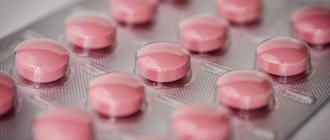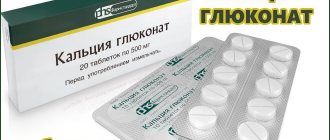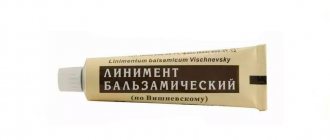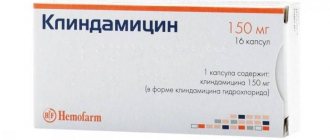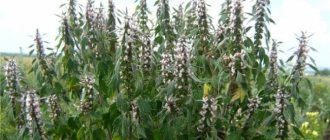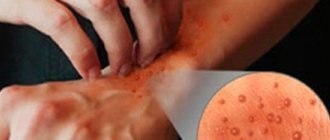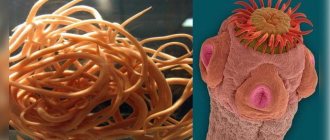Synonyms: Bryonia alba, white step
Many plants that are used to make homeopathic remedies are poisonous. That is why taking even the most harmless (at first glance) homeopathic remedies is prohibited without first consulting a doctor.
One of these drugs is Bryonia. In fact, behind the loud name that means nothing to the average person, there is a weed that grows near many households - white steppe.
Release form
Bryonia (indications for use are described in the annotation) is a medicinal product that is available in three forms:
- Bryonia oil. The homeopathic remedy is an opaque oily liquid of a yellowish or greenish color and has a subtle specific odor. After shaking, before use, it does not separate for another 1 hour. The oil is packaged in colored glass bottles and packed in boxes made of thick paper.
- Granules. The medicine is in the form of granules, round in shape, milky or light gray in color, without any odor. The drug is packaged in a plastic container of 9 g or 10 g of the drug and packed in a box made of a thick layer of paper.
- Homeopathic ointment for topical use. A homogeneous, ointment-like substance of milky yellow or light brown color, with a not very pronounced specific aroma. The drug is packaged in a plastic container with a lid and tamper evident. The product is packaged in a box made of thick paper.
Features of the composition
Each dosage form of the non-traditional drug Bryonia has a similar composition. But this is a homeopathic remedy, so it has dilution features.
Bryonia ointment consists of:
- extract from the medicinal plant peresupen white in homeopathic dilution D1 or 1X - has an anti-inflammatory effect on the body and a relaxing effect on the smooth muscles of the bronchopulmonary system;
- odorless and tasteless odorless liquid, Vaseline is an additional component.
Bryonia in granules, contains:
- extract from the Adam's root plant in dilution D3 or 3X (also D6 or 6X) - has an analgesic effect, and also relieves spasm of the trachea, bronchi and lungs;
- carbohydrate obtained by dextrinization of starch. It is obtained from a mixture of sucrose, fructose and starch - in a ratio of 3:1. The substance is the basis for homeopathic dilution.
Bryonia in the form of an oil solution consists of:
- extract from the medicinal plant peresupen white in homeopathic dilution D1 or 1X. The main substance has a pronounced anti-inflammatory and analgesic effect on the body in relation to joints. Antispasmodic and anti-expectorant effect regarding the bronchopulmonary system;
- additional substance softening ointment bases – a mixture of saturated hydrocarbons with C10 – C15.
Description of the plant
White bryonia (in Latin - Bryonia alba) is a perennial herbaceous plant belonging to the pumpkin family. It has a thick, radish-like fleshy root, white when cut, the surface of the roots has a yellowish tint. The stems of the plants are thin, with tendrils, reaching a length of up to 4 meters. The leaves are characterized by alternation, roughness, and petiole. Flower type: monoecious. The male flower is dirty yellow, the female flower is greenish. The fruits are spherical, black, 0.7-0.8 cm in size. Each berry contains 4-6 seeds, ovoid, slightly flattened, brown in color.
Flowering occurs in June-July, and in Central Asia - in April. The fruits ripen in July-August, thanks to which the plant looks quite decorative in the fall, when black berries stand out brightly among the green foliage.
Bryonia is most often found in the Caucasus and Central Asia, less often in the southern and western parts of Europe. Optimal conditions for growth are in river valleys and forest edges, but it is often found in parks, gardens and vegetable gardens with fertile soil as a weed plant. Some people manage to cultivate it for decorative and medicinal purposes. But using it independently for treatment is quite dangerous, and when growing it for beauty, you should be careful yourself and especially take care of children, who are likely to want to try the beautiful and appetizing berries.
pharmachologic effect
Bryonia (indications for use and action are described in the instructions) is a homeopathic remedy, the medicinal effect of which on the body is associated with the main substance of all forms of the drug - the Adam's root plant.
Beneficial properties of the main component of the drug Bryonia.
The chemical composition of the medicinal plant white foot (bryonia) includes volatile oily substances, fats, triglycerides, sulfonic acids, organic substances of the carboxyl group, nitrogen-containing natural compounds, and highly active biological substances.
Many useful acids - octadecanoic acid, carboxylic acid, plant polyphenols. The roots of the plant contain tanning agents, salts, mealy carbohydrates, urea, and hydrocarbon derivatives.
With such a large amount of useful substances, bryonia has medicinal properties:
- relieves pain;
- suppresses cough;
- relieves spasm of smooth muscles of the respiratory tract;
- exhibits anti-inflammatory effect.
Bryonia, which includes white steppe (with all medicinal properties), is effective in treating pathologies of the respiratory system. When used externally, the homeopathic remedy relieves joint and muscle pain and fights local inflammation.
The effect of the drug is manifested by the action of the active substances of the white foot on the cells of the body. As a result of active interaction, there is a gradual normalization of metabolic processes in pathological tissues, with a general improvement in the condition of the body. By relieving spasm of the smooth muscles of the respiratory tract, the drug promotes the removal of mucus and softens the cough reflex.
Properties
Since this plant is healing and analgesic, its main properties are:
- Pain relief.
- Eliminate inflammation in joints.
- The blood becomes more viscous.
- Cellular regeneration is noticeably increased.
- Water that is no longer needed by the body leaves it, and toxins are also eliminated.
- The walls of blood vessels become stronger.
- Helps improve immunity.
- There is a fight against cough, as a result of which it disappears
Attention! All its main actions are aimed at Adam's root - a plant that is practically the main ingredient in the creation of bryonia ointment.
Indications for use
The homeopathic remedy Bryonia in all forms has the same indications for use:
- inflammatory process in the roots of the spinal nerves;
- gouty arthritis;
- tendon inflammation;
- long-term musculoskeletal inflammation;
- sciatic nerve disease;
- inflammation of the joint capsule;
- damage to the respiratory tract by Koch's bacillus;
- pneumonia;
- pleurisy;
- diseases of the lower respiratory tract;
- autoimmune joint pathologies;
- inflammatory process of the tracheal mucosa;
- degenerative-dystrophic joint lesions;
- inflammation of large joints.
Instructions for use
An abstract to the homeopathic medicine Bryonia describes how the medicine should be used in different forms and for various pathological processes in the body.
Ointment for external use:
- for inflammatory pathologies in the joints, nerve endings and muscles, the product must be spread on the area of pain or inflammation in a small amount, using gentle massaging movements until completely absorbed. The procedure should be done several times a day;
- diseases of the respiratory system should be treated as follows - you need to spread a small amount of ointment on the chest and upper back. The product must be rubbed into the skin with gentle, massaging movements until the skin is visibly warmed. Then you should carefully wrap the area treated with the drug with a warm blanket or wear a warm vest. The procedure must be done a couple of times a day until there is visible relief of the general condition.
Bryonia granules have several types of dilution - 3X and 6X:
- pathological inflammatory processes in nerve endings, joints, and muscles should be treated with granules with a 3X dilution. In case of acute conditions, it is necessary to take 5 pcs. during the first week of treatment. every 4 hours. Then, continue therapy - 5 pcs. morning, afternoon and evening. The duration of treatment is determined by the therapist based on the general condition of the patient;
- diseases of the respiratory system must be treated with a 6X dilution. During acute processes, you should drink 5-6 granules of the drug every 4-5 hours. After the condition improves, you need to switch to a reduced dosage - 5-6 granules 2-3 times a day. Duration of therapy: until the symptoms of the disease disappear or as recommended by the general practitioner.
An oil-like liquid should be used in complex therapy:
- pathologies of the musculoskeletal system, neuralgia and neuritis - it is necessary to shake the product well before use, then rub a small amount of oily liquid into areas of inflammation or pain, using light massage movements. The procedure should be done several times a day until the symptoms of the pathological process disappear or as prescribed by the attending physician;
- inflammatory processes in the respiratory organs. You need to rub the oil into the chest and back area. You can do a massage using a homeopathic remedy for bronchitis, without fever. The medicine should be applied several times a day with gentle, pressing movements until the surface of the skin warms up. Then you need to wrap your back and chest, wearing a warm vest. The duration of therapy is until the symptoms of the pathological process disappear or as recommended by the general practitioner.
For children
Bryonia is a homeopathic medicine that can be used to treat children. Indications for use are described in the annotation for the medicine. If the pediatrician does not prescribe a specific treatment regimen with a drug, then a non-standard drug should be used in accordance with the age of the child.
The granules should be drunk before meals 30 minutes or after 1.5 hours:
- children up to 24 months of age - you need to dissolve 1-2 tablets in a spoon with water and give it to the child to drink (single dose). In case of acute processes in the body, the medicine should be taken up to 6 times a day. If there are visible improvements, reduce the number of doses to 2-3 times a day;
- age category from 24 months to 10 years. Dragees should be dissolved in the mouth, 2-5 pieces each. at a time, every 4 hours in the first days of illness. If the process improves, reduce the intake to 2-3 times a day;
- Children over 10 years old should be given the drug in quantities of up to 6 pieces. at one time, depending on the severity of the process. In case of severe illnesses, as part of complex therapy, you need to drink 4-6 granules every 4 hours. As the child’s condition improves, reduce the number of appointments to 2-3 times.
- Homeopathic oil can be used for children in an amount corresponding to the volume of the inflamed surface - in a small amount, it should be rubbed into the skin until warm. In case of inflammatory lesions of the respiratory system, after the procedure it is necessary to wrap the child in a warm blanket or wear a vest. Inflammatory lesions of joints and muscles do not require wrapping.
- Bryonia ointment should not be used for children under 18 years of age, due to the insufficiently studied effect of the drug in 3X dilution on this age category.
Bryonia is a serious drug and should be used only as prescribed by a pediatrician, in accordance with the recommended regimen.
II. CAUSES
The actual reason leading to the condition of Bryonia is always a protective reaction of the body. The process is localized on the serous membranes, an effusion is formed, then resorption of toxins occurs, which can be considered as an isopathic treatment that immunizes the patient for a while.
What is the cause of this effusion? It's always cold. The Bryonia patient is much worse from cold. You will object that all the remedies we have already studied are worsened by cold - Aconitum, Belladonna, Ferrum phosphoricum. It will seem to you that this sign has no value. This is not so, since the Aconitum condition is caused by dry cold and strong wind, but the Belladonna condition comes on suddenly after a draft - for example, the patient has cut his hair or removed his hat too soon before entering the room, and therefore caught a cold. The Bryonia condition is caused by damp cold, especially if warm days give way to cold ones, as happens in autumn (a number of authors, including V. Boericke, indicate the opposite modality for Bryonia, that is, when cold days give way to warm ones. - Approx. trans.
)
Another cause of Bryonia symptoms is demineralization. Demineralization may manifest itself as constipation or amenorrhea, in which case menstrual discharge is replaced by nosebleeds. Think about the fact that demineralization is a manifestation of intoxication, in our case of tuberculin origin. There is no need to always think about Pulsatilla in tuberculinism. Pulsatilla is often indicated in tuberculin conditions, but Bryonia is also a very good remedy. Even a child can make a differential diagnosis between them. Pulsatilla is never thirsty, but Bryonia is always thirsty. The symptoms of Pulsatilla are variable, but those of Bryonia are constant, since the patient usually tends to localize the process. Finally, in Pulsatilla there is cyanosis of the limbs due to venous congestion, which is not present in Bryonia; the hand will be very dry, but clean, and there will be no tendency to cyanosis or frostbite.
Note two small objective symptoms that can be seen in a Bryonia patient.
- Constant sideways movements of the lower jaw, as if the patient were chewing.
- Constant movements of the left arm and leg. These are almost chorea-like movements. This way you can diagnose Bryonia at a distance.
However, there is another medicine in the Materia Medica that is characterized by automatic movements of the arm or leg. This is Helleborus. But in this case there is paralysis on the opposite side. Therefore, it is difficult to make a mistake when choosing between Helleborus and Bryonia. Moreover, the automatic movements of Helleborus will not always be on the left, whereas in Bryonia they will always be observed on this side.
Use during pregnancy and lactation
The homeopathic remedy Bryonia in the form of ointment, oil or granules can be used during pregnancy, but strictly as prescribed by a doctor. It has not been scientifically proven how the drug affects the development of the fetus during pregnancy.
Therefore, the use of the medicine is permissible in cases where the benefit from using or applying the medicine to the expectant mother is greater than the possible danger to the developing fetus or infant. Use strictly after consultation with a gynecologist or pediatrician.
Side effects
The medicinal plant Adam's root (dioecious bryonia), which is the main component of the homeopathic preparation, is a poisonous substance. Therefore, if used or applied incorrectly, it can provoke negative manifestations.
When taken orally:
- severe stomach pain;
- intestinal colic;
- when starting treatment, the course of the disease worsens;
- nettle rash;
- itching;
- lacrimation;
- redness of the eyes;
- copious mucus discharge from the nasal cavity;
- dyspeptic manifestations in the form of loose stools;
- flatulence;
- in more serious cases - internal bleeding.
Outdoor use:
- local redness of the skin;
- itching;
- nettle rashes;
- swelling of body tissues;
- worsening of the disease.
Plant danger
All parts of the plant, and the roots and fruits in particular, contain toxic substances - alkaloids. The presence of brionin, brein, brionidin and triterpenoids-cucurbitacins makes the plant very dangerous. In addition, the roots also contain tannins, resins, starch, and malic acid salts.
The seeds contain fatty oil (mass fraction - 25%), as well as lycopene.
The leaves also contain ascorbic acid.
Children are most susceptible to bryonia poisoning because they taste the poisonous berries. Approximately 6-8 berries can provoke severe poisoning. But there are also cases when adults self-medicate, and due to a violation of the technology for preparing the medicine or an incorrect dosage, they get a whole range of troubles. If the medicine was prepared for external use, severe redness and sometimes even blisters occur.
Contraindications
Bryonia (indications for the use of the drug are described in the instructions) is a pharmacological drug that contains an extract from the white peresupen plant.
The use of this plant has contraindications even with strong homeopathic dilution:
- history of allergic reactions – for granules and topical use;
- period of gestation;
- breast-feeding;
- diabetes;
- lactose intolerance;
- in case of individual intolerance to the plant Adam's root;
- for use of the drug in the form of an ointment – age up to 18 years.
Analogs
There are no analogues to the drug in terms of the active substance, so medications that are similar in the principle of their effect on the body are being considered.
"Lobelia EDAS"
Edas, Russia Price from 110 to 150 rub.
A complex homeopathic preparation that includes lobelia, belladonna and other active compounds of medicinal plants. The product helps in the treatment of various types of cough, pharyngitis, laryngitis, and strengthens the immune system.
pros
- Available in drops and tablets - both forms are taken orally
- Non-addictive
Minuses
- Granules contain sugar - restrictions for patients with diabetes
- The multicomponent composition increases the risk of allergies.
"Sagrippin"
Homeopathic pharmacy, Russia Price from 110 to 170 rubles.
A complex preparation that, among other components, contains aconite with belladonna. Used for ARVI, bronchitis, pneumonia. Available in dragees.
pros
- Combined with antibiotics, antihistamines, antipyretics
- Available without a prescription
Minuses
- Children under 3 years of age cannot be treated
- Increased risk of allergies due to multiple active ingredients.
Overdose
From a theoretical point of view, a homeopathic medicine cannot cause overdose symptoms. In practice, if the drug is used incorrectly or used, even in a 1X, 3X dilution, the drug can cause severe intoxication in the body.
For local use:
- rashes on the surface of the skin;
- severe itching;
- anaphylactic reactions;
- Quincke's edema.
For oral use:
- bloody stools;
- painful muscle spasms;
- unsteadiness of gait;
- inflammatory process in the kidneys;
- damage to the respiratory system in the form of lack of air;
- pain behind the chest;
- barking cough;
- severe pain in the head;
- in the area of the hepatobiliary system – burning painful sensations;
- yellowness of the skin;
- bitterness in the mouth;
- tachycardia;
- feeling of heat in the head;
- hyperthermia;
- inability to sleep;
- hyperhidrosis;
- vomit;
- general disorder of the body due to intoxication;
- hypotension;
- fainting;
- in severe cases, coma.
If all of the above manifestations occur, you should stop using the drug and consult your doctor. In severe cases: headache, fainting, drop in blood pressure, an ambulance should be called to treat an overdose in a hospital setting.
Characteristic
- Worse by motion and better by rest is the chief characteristic of bryonia.
- Extreme dryness of the mucous membranes, resulting in: dry, wrinkled, cracked lips; hard, as if burnt stool; feeling of heaviness in the stomach; the need to drink large quantities at a time.
- Effusion in serous cavities, with stitching pains.
- Inflammatory swelling of the joints, with pale integuments.
- Progressive apathy, reaching the point of numbness.
- Heat relieves all symptoms except headache.
- The area of any irritation or inflammation is extremely sensitive to touch, ameliorated by strong pressure.
The pain is sharp, stabbing, quickly appearing, often intermittent, sometimes shooting along the nerve trunks.
These pains primarily affect the right side and are always worsened by the slightest movement; therefore, movements of the eyeballs sharply increase the headache of bryonia. They invariably improve with rest, firm pressure (the diseased bryonia always lies on the sore side), cold compresses and cold drinks. We must not forget that cold is an occasional, if not the main cause of pain in a subject of bryonia, and, in particular, damp cold (in aconite it is dry).
Menses: too premature and too profuse. They may be absent and replaced by vicarious nosebleeds, or their absence causes headaches.
Drug interactions
When using the drug Bryonia for treatment, you need to know about the interaction of the drug with other substances and medications:
- purine alkaloids should not be used simultaneously in therapy with the drug;
- corticosteroids reduce the effect of taking the medication;
- antitumor drugs suppress the effect of a homeopathic remedy;
- nicotinic acid reduces the effect of Bryonia.
Reviews about the use of the drug
The most positive reviews about the homeopathic remedy come from women who have small children. In their opinion, Bryonia oil is the most harmless remedy that helps with acute respiratory infections with cough.
Sweet granules also appealed to many patients who were prescribed an anti-inflammatory drug. The drug in the form of an ointment, from the testimonies of people who used the product for joint problems, helps very well to cope with swelling and pain.
Bryonia is a drug that has many indications for use, as written in the annotation for the homeopathic remedy. A very large number of grateful reviews about the positive effect of the medicine on the body indicates its effectiveness.
